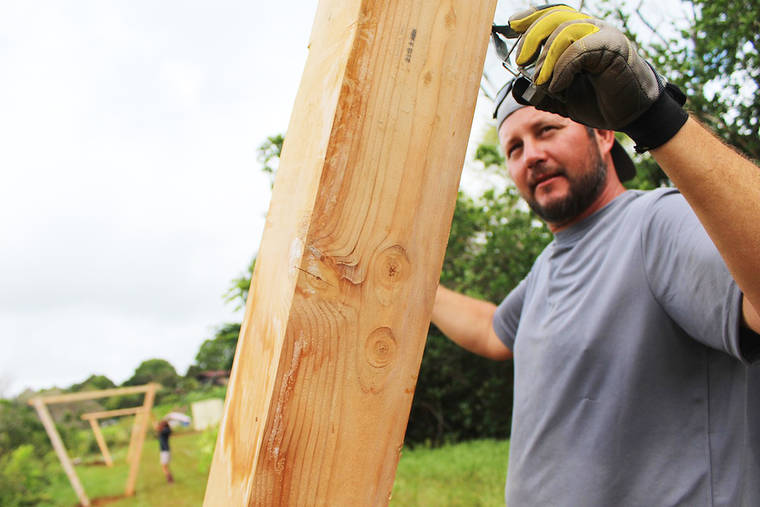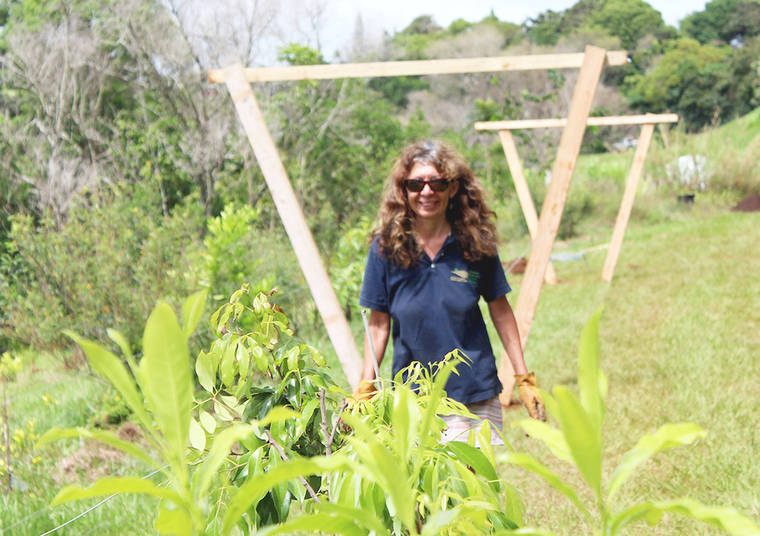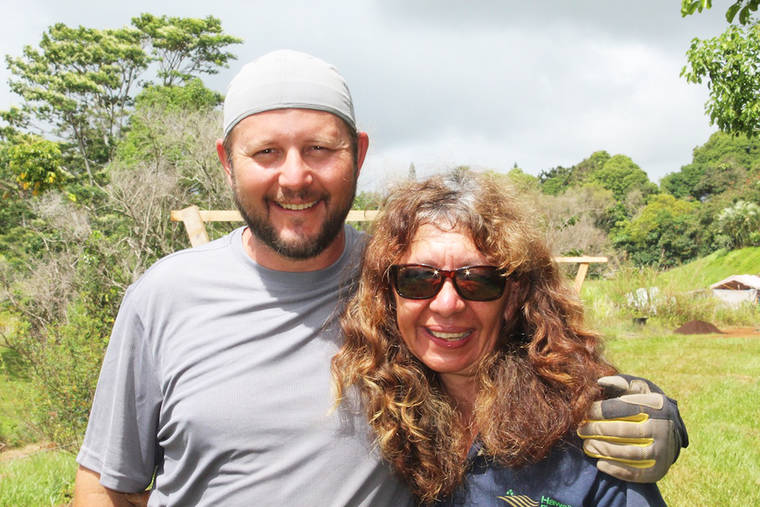Trees on a trellis



WAILUA HOMESTEADS — It’s all about more mangos.
More food. That’s why Jordan Longman and Anny Bruch are building a 100-foot-long, fruit-tree trellis on the Bruch farm in Wailua Homesteads.
Posts are set into the ground in a V shape at 17.5-degree angles every 50 feet, with wires running the length. Trees are lined up, ready to go into the dirt. People on Kauai attended a workshop Tuesday to understand how it all works.
“I’m just so inspired,” said Kauai resident Esellie Laing. “I didn’t really know what I was getting into (when I signed up). I just knew I needed to go.”
Longman arrived on Tuesday to work with the Hawaii Farmers Union Foundation to host a workshop for local farmers and build a demonstration trellis, one that Bruch has been trying to create on Kauai for more than a year.
They’ve nearly finished construction, and once it’s growing, the trellis will show the advantages of growing fruit trees at an angle versus letting them grow in rows.
“The yields are four to five times what you’d get (in a traditional orchard), production costs are reduced by 50 percent, and you can do all the work with hand pruners,” Longman said. “There’s no chainsaws or climbing, and it’s strong enough to survive a Category 5 hurricane.”
Longman learned about trellis-style growing methods about three years ago at a Hilo demonstration, and started the practice on the Maui farms he manages. Within three years of planting mangos on the trellises he was harvesting.
“It’s not a full crop in three years, but the trees (traditionally) wouldn’t be able to support mangos at three years old,” Longman said. “It becomes a V-shaped hedge with fruit dangling off of it. It’s incredible.”
Other advantages to the trellis are the ability to concentrate fertilizers and nutrient programs and the ability to grow lots of types of food in a smaller space.
The Bruch farm trellis isn’t the only one on Kauai. Farmers on the Westside have constructed a couple of them in their orchards in order to produce more food.
And that’s the whole point of the tree trellises.
“This method gives us the possibility of providing more food for our islands. I feel this can solve our food crisis because people could put one or two in their backyard and grow lots of food,” Longman said.
He envisions using them for barriers between homes, “living fences” that will produce food for families on both sides.
“You get one side and I’ll care for the other side and we’ll eat the best mangos on the planet,” Longman said.
Longman will consult with anyone interested in getting a trellis started on their property.
More info: jrlongman08@gmail.com or abruch@gmail.com
•••
Jessica Else, environment reporter, can be reached at 245-0452 or jelse@thegardenisland.com.
